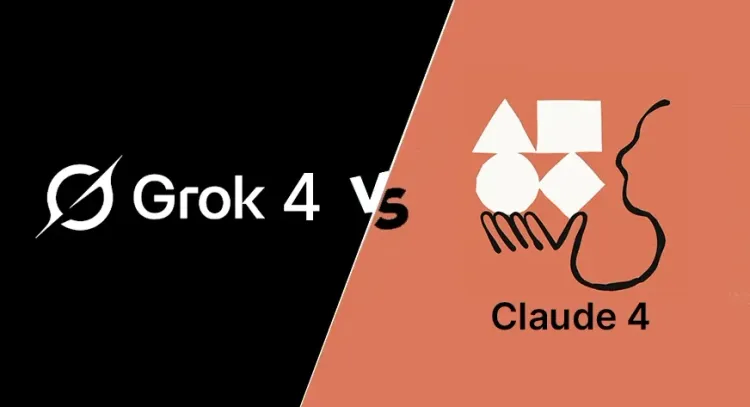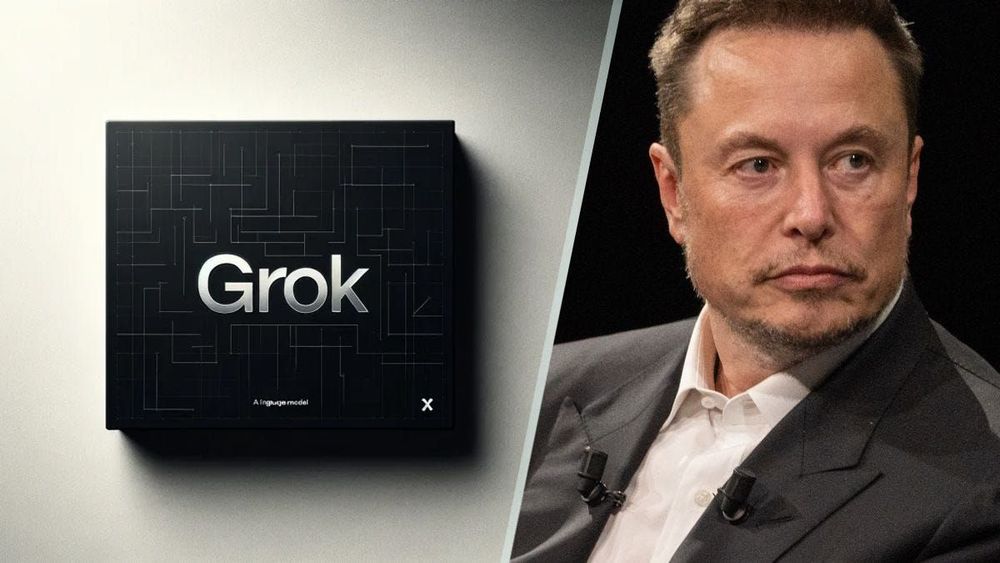As artificial intelligence continues to reshape industries and redefine the boundaries of human capability, the competition among leading language models has reached new heights. In this ever-evolving landscape, Claude 3.5 and GPT-4o stand out as two of the most advanced AI systems available today. Each model brings its own unique strengths and features, making them invaluable tools for businesses and individuals alike.

Claude 3.5, crafted by Anthropic, is designed with a strong emphasis on safety and user alignment, reflecting a commitment to ethical AI development. In contrast, GPT-4o, developed by OpenAI, is celebrated for its versatility and robust performance across a myriad of applications, from content generation to complex problem-solving.
This article seeks to provide a thorough comparison of Claude 3.5 vs. GPT-4o, exploring their technical specifications, performance metrics, ideal use cases, and ethical considerations. By examining these aspects in detail, we aim to empower you with the knowledge needed to choose the right AI model for your specific requirements in an ever-evolving digital landscape.
Let’s dive into the intricacies of these two pioneering models and discover what differentiates them in the world of artificial intelligence!
Brief Background: Claude 3.5 vs. GPT-4o
Overview of Claude 3.5
Claude 3.5, specifically the Claude 3.5 Sonnet version, represents a significant advancement in AI technology developed by Anthropic. Launched in mid-2024, this model is designed to redefine industry standards for intelligence, speed, and cost-effectiveness. Claude 3.5 Sonnet excels in various cognitive tasks, from complex reasoning to coding proficiency, outperforming its predecessor, Claude 3 Opus, in multiple benchmarks across diverse domains such as legal and financial analysis.
One of the standout features of Claude 3.5 is its innovative Artifacts capability, which transforms how users interact with AI-generated content. This feature allows for real-time collaboration by presenting generated outputs alongside ongoing conversations, thereby enhancing productivity and fostering a more intuitive user experience. Claude 3.5 is also built with a strong commitment to safety and ethical considerations, ensuring that its applications align with user needs while minimizing harmful outputs.
Overview of GPT-4o
In contrast, GPT-4o, developed by OpenAI, has established itself as a versatile powerhouse in the realm of AI language models. Known for its extensive training on diverse datasets, GPT-4o excels in generating coherent and contextually relevant text across a wide range of applications—from creative writing to technical problem-solving. Its architecture is designed to handle complex queries efficiently while maintaining high levels of accuracy and reliability.
GPT-4o's capabilities are further enhanced by its ability to produce structured outputs, making it particularly valuable for developers who require consistent data formats for applications such as APIs and databases. This model has been recognized for its superior instruction-following abilities, allowing it to respond effectively to user prompts and deliver high-quality results consistently. OpenAI's ongoing commitment to ethical AI deployment also reflects in GPT-4o's design, ensuring that it adheres to guidelines aimed at promoting responsible use.
These models represent the forefront of AI innovation, each with unique strengths tailored to specific use cases. As organizations and individuals increasingly leverage these models for various applications, understanding their foundational principles and capabilities is crucial for making informed decisions about their implementation in real-world scenarios.
Technical Specifications: Claude 3.5 vs. GPT-4o
Model Architecture
Both Claude 3.5 and GPT-4o utilize advanced transformer architectures, which have become the standard for state-of-the-art language models. However, there are notable differences in their designs that contribute to their respective strengths.
Claude 3.5 employs a modified transformer architecture that enhances its ability to understand context and maintain coherence over longer interactions. This architecture is optimized for safety and user alignment, allowing it to generate responses that are not only relevant but also ethically sound. The model features an impressive parameter count, which contributes to its nuanced understanding of language and complex reasoning capabilities.
On the other hand, GPT-4o builds on the foundation laid by its predecessors while introducing enhancements in scalability and efficiency. With a significantly larger parameter count compared to earlier versions, GPT-4o can process vast amounts of information quickly and generate high-quality outputs across diverse topics. Its architecture is designed to maximize performance in real-time applications, making it suitable for tasks that require rapid response times.
Training Data
The quality and diversity of training data are critical factors influencing the performance of AI models.
Claude 3.5 has been trained on a carefully curated dataset that emphasizes ethical considerations and user alignment. This dataset includes a wide range of sources, ensuring that the model can generate content that is not only accurate but also socially responsible. The focus on safety means that Claude 3.5 is less likely to produce harmful or biased outputs, making it a reliable choice for sensitive applications.
In contrast, GPT-4o has been trained on an extensive and diverse dataset that encompasses a broad spectrum of topics, styles, and formats. This vast training data enables GPT-4o to excel in generating creative content, technical documentation, and conversational responses. The model's ability to draw from such a wide array of information allows it to provide nuanced answers across various domains, although this breadth may sometimes lead to less stringent adherence to ethical guidelines compared to Claude 3.5.
Performance Metrics
When evaluating AI models, performance metrics such as accuracy, coherence, and response time play a crucial role in determining their effectiveness.
Quality Assessment: Both models have demonstrated high-quality outputs in benchmark tests. Claude 3.5 often excels in tasks requiring ethical considerations and user alignment, producing responses that resonate well with users' needs. GPT-4o, however, shines in versatility and creativity, often delivering more engaging and varied outputs.
Speed and Efficiency: In terms of processing speed, GPT-4o has an edge due to its optimized architecture designed for rapid response times. It can handle multiple queries simultaneously without significant latency, making it ideal for applications requiring real-time interaction. Claude 3.5 also performs well but may prioritize safety checks over speed in certain contexts.
Scalability: Both models are designed to scale effectively with increased demand; however, GPT-4o's architecture allows it to manage larger workloads more efficiently. This scalability makes GPT-4o particularly suitable for enterprise-level applications where high throughput is essential.
The technical specifications of Claude 3.5 and GPT-4o highlight their unique strengths and capabilities. While both models leverage advanced architectures and extensive training data, their differing focuses on safety versus versatility cater to distinct needs within the AI landscape.
User Experience and Accessibility: Claude 3.5 vs. GPT-4o
Interface and Usability
User experience is a critical factor in the adoption and effectiveness of AI models. Both Claude 3.5 and GPT-4o have made significant strides in creating user-friendly interfaces that enhance interaction and productivity.
Claude 3.5 offers an intuitive interface designed with user alignment in mind. The layout is clean and straightforward, allowing users to engage with the model seamlessly. Its interactive features, such as the Artifacts capability, enable real-time collaboration, where generated content appears alongside ongoing conversations. This design not only fosters a more engaging user experience but also empowers users to refine and adapt outputs dynamically, making it particularly valuable for collaborative projects.
In contrast, GPT-4o provides a versatile interface that caters to a wide range of applications. Its flexibility allows developers to customize the user experience according to specific needs, whether for chatbots, content generation tools, or data analysis applications. The interface is designed for efficiency, enabling quick access to various functionalities while maintaining a visually appealing layout. Users often appreciate the model's responsiveness and ease of navigation, which contribute to a positive overall experience.
API Access and Integration
The ability to integrate AI models into existing systems is paramount for businesses looking to leverage their capabilities effectively.
Claude 3.5 offers robust API access that simplifies integration into various platforms. The API is well-documented, providing developers with clear guidelines on how to implement the model in their applications. This accessibility ensures that organizations can easily incorporate Claude 3.5 into their workflows, enhancing productivity without significant technical hurdles.
Similarly, GPT-4o boasts a powerful API that allows for seamless integration across diverse environments. OpenAI has prioritized developer support by providing comprehensive documentation and resources, which facilitate smooth onboarding and implementation processes. The API's flexibility enables businesses to tailor the model’s functionalities to meet specific requirements, whether for customer service automation or content creation.
Both models support popular programming languages and frameworks, ensuring that developers can work within their preferred ecosystems. This level of accessibility is crucial for organizations aiming to harness AI capabilities without facing significant barriers to entry.
Overall, both Claude 3.5 and GPT-4o prioritize user experience and accessibility, albeit in slightly different ways. Claude 3.5 focuses on creating an interactive environment that enhances collaboration and user alignment, while GPT-4o emphasizes versatility and efficiency in its interface design. Their robust APIs further ensure that organizations can easily integrate these powerful models into their existing systems, ultimately driving innovation and productivity across various sectors.
Use Cases and Applications: Claude 3.5 vs. GPT-4o

As organizations increasingly turn to advanced AI models, understanding the specific use cases for Claude 3.5 and GPT-4o is essential for maximizing their potential. Each model brings unique strengths that make them suitable for various applications across different industries.
Ideal Scenarios for Claude 3.5
Claude 3.5 shines in contexts where safety, ethical considerations, and user alignment are paramount. Some of its ideal applications include:
- Customer Support: With its focus on user alignment, Claude 3.5 excels in customer service scenarios, providing accurate and empathetic responses to customer inquiries. Its ability to understand context ensures that users receive relevant information tailored to their needs.
- Content Moderation: The model's safety features make it an excellent choice for content moderation tasks. It can effectively analyze user-generated content to identify and flag inappropriate or harmful material, helping organizations maintain a positive online environment.
- Educational Tools: Claude 3.5 can be employed in educational applications to assist students with learning materials, answer questions, and provide constructive feedback on assignments. Its emphasis on ethical considerations ensures that the information provided is reliable and appropriate.
- Therapeutic Chatbots: In mental health applications, Claude 3.5 can serve as a supportive conversational partner, offering empathetic responses while adhering to ethical guidelines. This makes it a valuable tool in therapeutic settings where sensitivity is crucial.
Ideal Scenarios for GPT-4o
GPT-4o's versatility and extensive training data make it suitable for a wide range of applications, including:
- Creative Writing: GPT-4o excels in generating engaging narratives, poetry, and other forms of creative content. Its ability to produce varied styles and tones allows writers to explore new ideas and enhance their creative processes.
- Technical Documentation: The model’s proficiency in handling complex topics makes it ideal for generating technical documentation, user manuals, and instructional content. Its structured output capabilities ensure clarity and consistency in communication.
- Data Analysis and Reporting: GPT-4o can assist in analyzing data sets and generating insightful reports. Its ability to interpret complex information allows businesses to make data-driven decisions quickly and effectively.
- Chatbots and Virtual Assistants: The model's rapid response times and high-quality outputs make it an excellent choice for developing chatbots and virtual assistants that can handle customer inquiries, schedule appointments, or provide personalized recommendations.
By understanding these use cases, organizations can better leverage the capabilities of each model to meet their specific needs, ultimately driving innovation and enhancing productivity in their operations.
Cost: Claude 3.5 vs. GPT-4o

When considering the implementation of advanced AI models like Claude 3.5 Sonnet and GPT-4o, understanding their pricing structures is crucial for organizations aiming to optimize their budgets. Each model offers unique pricing options that cater to different usage scenarios, making it essential to evaluate these costs carefully.
Claude 3.5 Sonnet Pricing
- Input Tokens: $3 per million tokens
- Output Tokens: $15 per million tokens
- Prompt Caching Write: $3.75 per million tokens
- Prompt Caching Read: $0.30 per million tokens
- Batches API Discount: 50% off
Claude 3.5 Sonnet is designed to deliver exceptional performance while maintaining competitive pricing, particularly beneficial for organizations focused on safety and ethical considerations.
GPT-4o Pricing
- Input Tokens: $2.50 per million tokens
- Output Tokens: $10.00 per million tokens
- Batch API Pricing:
- Input Tokens: $1.25 per million tokens
- Output Tokens: $5.00 per million tokens
- Cached Input Tokens: $1.25 per million tokens
GPT-4o stands out with its advanced capabilities and flexible pricing options, especially through its Batch API, which offers significant savings for high-volume users.
Discover the Best Fit for Your Needs!
As we’ve explored throughout this article, the comparison between Claude 3.5 Sonnet and GPT-4o reveals the distinct strengths and applications of each model in the realm of artificial intelligence. From their technical specifications and performance metrics to user experience and cost structures, both models offer unique advantages that cater to different organizational needs.
Claude 3.5 Sonnet stands out for its commitment to safety and ethical considerations, making it an ideal choice for applications requiring a high degree of user alignment. Meanwhile, GPT-4o excels in versatility and efficiency, offering powerful capabilities across a wide range of tasks at competitive pricing.
Ultimately, the decision between these two advanced models will depend on your specific requirements, whether it's for customer support, creative writing, or data analysis. By understanding the nuances of each model, organizations can harness the power of AI to drive innovation and enhance productivity.

For those looking to further their knowledge and explore more comparisons between large language models, we encourage you to check out AI-Pro's Learn AI. Here, you’ll find a wealth of resources, articles, and courses designed to deepen your understanding of AI technologies.









